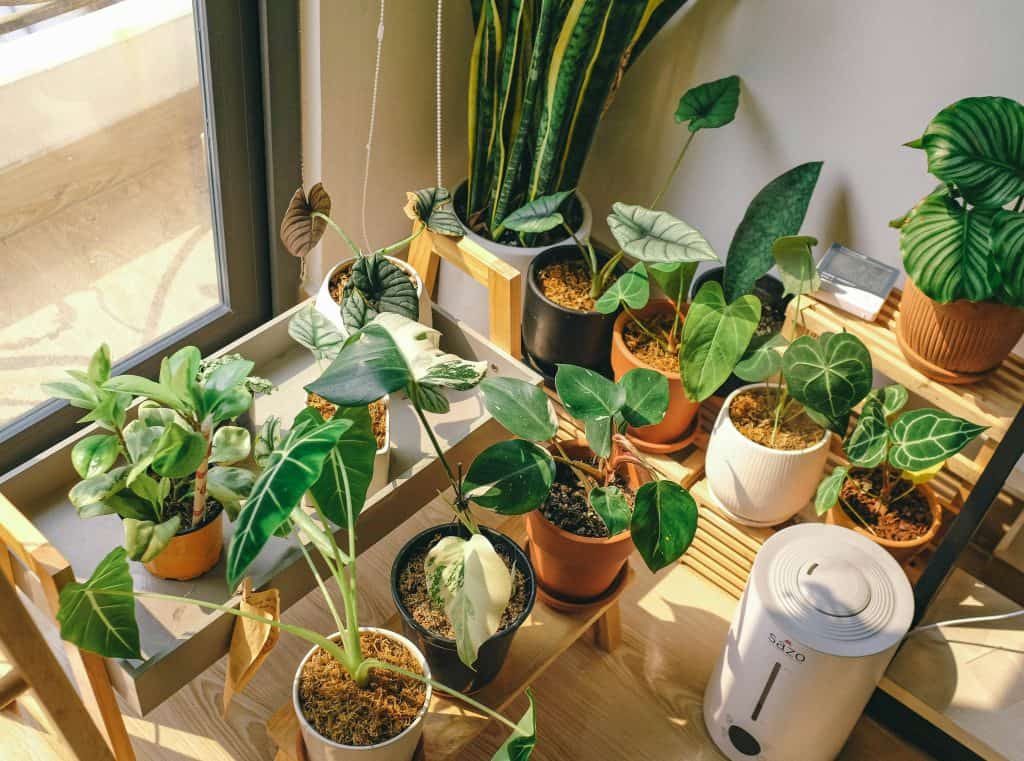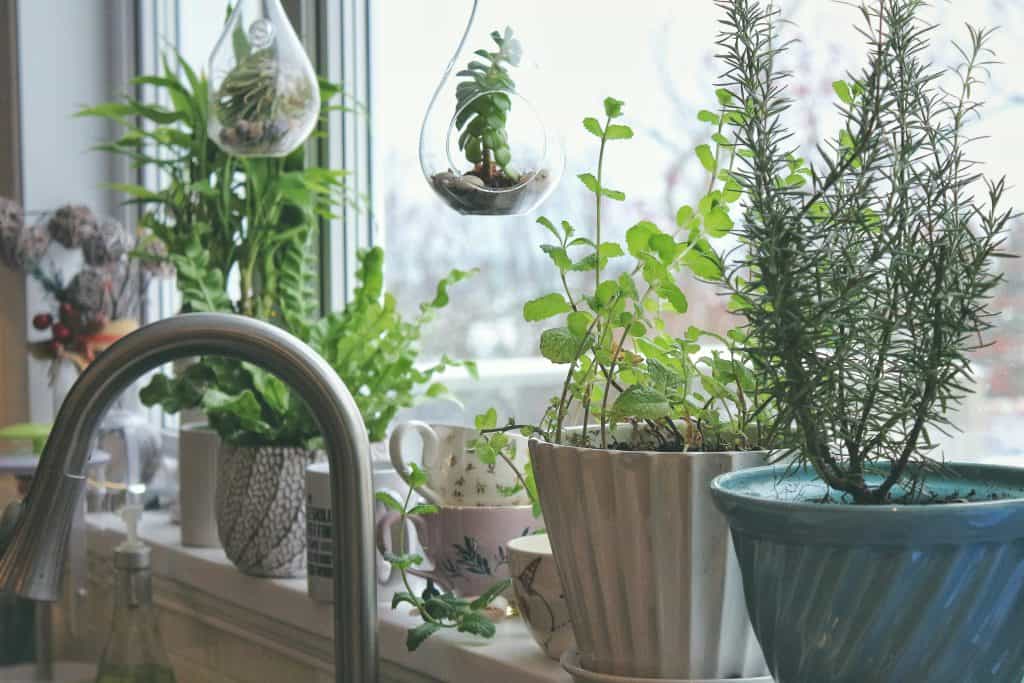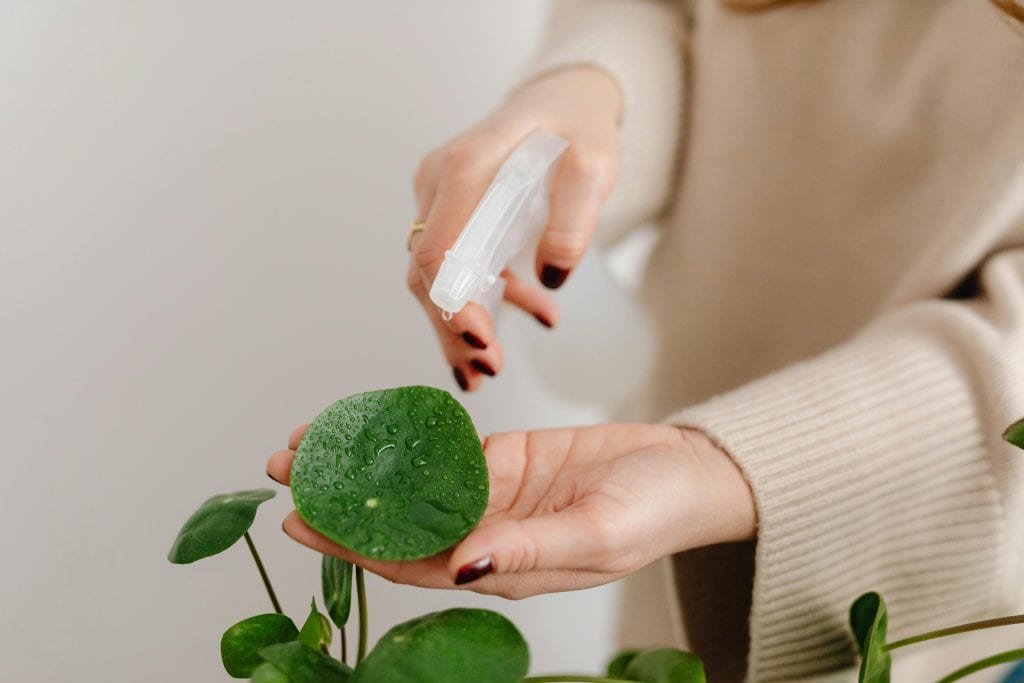Watering indoor plants isn't complicated, but it's something a lot of people struggle with. Too little water and your plants wilt; too much and they're swimming.
Getting it just right is easier than you might think. By knowing a few simple tricks, you can keep your indoor plants thriving without fuss.
In this article, I'll walk you through straightforward tips on how to water your houseplants the easy way, so you can enjoy healthy, green plants in your home.
Why Indoor Plants Need Different Care than Outdoor Plants

Indoor plants don’t experience the natural rainfall, wind, or sun that outdoor plants do, so they depend completely on you to get the right amount of water.
They're usually in pots, which means the water has nowhere else to go if you put in too much. This can quickly cause trouble.
Inside your home, the air might also be drier or warmer, affecting how often you need to water.
Common Mistakes When Watering Indoor Plants
One of the most common issues plant parents face? Overwatering or underwatering.
If you water too much, your plant’s roots can get waterlogged, leading to yellowing leaves, root rot, or even mold growth. It’s like drowning the poor thing in love.
On the flip side, too little water can leave your plant dry and stressed. You might notice wilting, crispy edges, or leaves dropping off.
Another common mistake is watering on a fixed schedule without checking how the plant actually feels. Just because it’s “Watering Wednesday” doesn’t mean your plant is thirsty.
Soil moisture, humidity, sunlight, and the type of plant all play a role – so it’s better to check the soil first rather than relying on the calendar.
How Often Should You Water?

Watering your indoor plants on the right schedule isn’t about guessing or sticking to a strict calendar. It’s about paying attention to what the plant actually needs and knowing what affects how fast the soil dries out.
Factors That Affect How Often You Water
Plants aren't all the same, and how often you water them can vary. A plant’s type, pot size, room temperature, humidity, and even the seasons can affect how quickly soil dries out.
Succulents and cacti, for instance, need much less water compared to leafy or flowering houseplants.
Bigger pots usually hold moisture longer than smaller pots, while hotter, drier rooms cause plants to dry out faster. In winter, plants grow slower and need watering less frequently.
Easy Ways to Know When Your Plant Needs Water
Forget complicated schedules or fancy gadgets. A quick way to check is simply sticking your finger about an inch into the soil – if it feels dry, it's time to water.
Another easy method is lifting the pot: if it feels surprisingly light, your plant probably needs a drink.
Over time, you'll naturally learn to sense your plant’s watering rhythm just by looking at it or feeling the soil.
Best Time of Day to Water

When you water your plants can make a difference. It's not just about how much you give them – timing helps your plants take in water better and stay healthy.
Morning, Afternoon, or Night – What’s Best?
The best time to water indoor plants is in the morning. That gives the plant time to soak up the moisture before the light and warmth of the day helps it dry out any extra water.
It also helps prevent mold or root problems that can come from water sitting too long in the soil. Watering at night might seem easier, but it can leave soil wet for too long, especially in cooler rooms.
When plants sit in soggy soil for too long, especially overnight, it can lead to root rot or fungus. Morning watering gives them the full day to make use of the water, and any extra has time to dry up.
If mornings aren’t possible, early afternoon is okay too – just avoid watering late in the day on a regular basis.
Choosing the Right Type of Water
Not all water is the same, and what you use can make a difference over time. Some plants are more sensitive than others, so it’s worth knowing what kind of water works best.
Tap Water, Filtered Water, or Rainwater – What’s Practical?
Most indoor plants will do fine with regular tap water, especially if it’s not heavily treated. But if you notice brown tips on the leaves or white crust on the soil, it might be from the minerals or chlorine in the tap water.
Filtered water or rainwater is gentler on plants and can be a better choice for more sensitive types like ferns or orchids. But if all you have is tap water, it usually still gets the job done.
Should You Avoid Chlorinated Water?
Some tap water has a lot of chlorine, which certain plants don’t like. If you want to be cautious, let tap water sit out overnight in an open container before using it.
That gives the chlorine time to evaporate. It’s a small step that can help over time, especially for picky plants.
Easy Tips to Treat Tap Water for Healthier Plants
- Let the water sit overnight to reduce chlorine.
- Use room temperature water so you don’t shock the roots.
- If you notice salt buildup on the soil, flush the pot once in a while with plain water until it runs out the bottom.
Proper Watering Techniques
How you water is just as important as how much. Doing it the right way helps the roots grow strong and keeps the plant from sitting in soggy or dry soil.
Top Watering Method (The Standard Way)
This is the most common way – just pour water onto the soil from above. Do it slowly so the water soaks in and doesn’t rush through. Keep watering until a bit comes out the bottom of the pot.
That means the roots got enough. Avoid pouring water directly on the leaves or the center of the plant unless it’s one that likes it (like ferns).
Bottom Watering Method (When It’s Useful and How to Do It Right)
Bottom watering is when you set the pot in a shallow tray of water and let the soil soak it up from the drainage holes.
This works well for plants that don’t like getting their leaves wet, or if the soil has gotten too dry to absorb water from the top.
Let the plant sit for 15–30 minutes, then take it out and let the extra water drain off.
How to Water Without Making a Mess
Use a watering can with a narrow spout to control the flow. Pour slowly, aim for the soil, and avoid overfilling.
If your plant is on a shelf or in a spot where it’s hard to reach, using a long-spout can or even a squeeze bottle can help you water without spilling everywhere.
Avoiding Underwatering and Overwatering
Most problems with indoor plants come down to either not enough water or too much. Learning the signs can help you fix things before the plant goes downhill.
Signs That Your Plant Is Underwatered
If your plant’s leaves are wilting, curling, or turning crispy at the edges, it's probably too dry.
The soil might also look cracked or pull away from the sides of the pot. Some plants will even drop leaves when they’re really thirsty.
Signs Your Plant Might Be Getting Too Much Water
Yellowing leaves, soggy soil, or a musty smell are all signs you may be watering too often.
If the soil feels wet days after you last watered, that’s a red flag. Mushy stems or mold on the surface are also signs that roots might be rotting.
Quick Fixes for Both Problems
If you’ve underwatered, give the plant a good soak – either from the top or by letting it sit in a bowl of water for a while. Then get back on a routine that fits the plant’s needs.
If you’ve overwatered, let the soil dry out completely before watering again.
If it’s really soggy or smells bad, you might need to repot the plant into fresh, dry soil and make sure the pot has good drainage.
Using Simple Tools for Easier Watering

You don’t need anything fancy, but a few basic tools can make watering less messy and more accurate especially if you’ve got a lot of plants or hard-to-reach spots.
Practical Tools Like Watering Cans, Spray Bottles, and Moisture Meters
A small watering can with a narrow spout is great for getting water right where it needs to go without soaking the leaves or spilling.
Spray bottles are handy for misting humidity-loving plants like ferns, though misting isn’t a substitute for real watering.
Moisture meters can help if you’re not sure when to water. Stick one in the soil and it gives you a quick read on how wet or dry it is.
They’re not always perfect, but they’re useful, especially if you’re new to plant care.
Are Moisture Meters Really Worth It?
They can be, especially if you're still learning or have plants that don’t show clear signs when they need water. Just don’t rely on them alone – use them along with checking the soil with your finger and paying attention to how the plant looks.
Watering Tips for Common Houseplants
Not all houseplants want the same amount of water. Knowing what kind you’ve got helps you give each one what it needs without overdoing it.
Succulents and Cacti
These store water in their leaves and stems, so they don’t need much. Let the soil dry out completely between waterings. In cooler months, they may only need water every few weeks.
Overwatering is one of the fastest ways to kill them.
Tropical Leafy Plants
Plants like pothos, philodendrons, and monsteras like their soil to stay a bit moist but not soggy. Let the top inch or so dry out before watering again.
These usually need more frequent watering, especially in warmer months.
Flowering Indoor Plants (Orchids, Violets, etc.)
These are a bit pickier. Orchids like to dry out almost completely, but not for too long. African violets prefer the soil to stay slightly moist.
Avoid getting water on their leaves to prevent spots or rot – bottom watering works well for these.
Keep Your Indoor Plants Healthy by Watering the Right Way

Watering indoor plants doesn’t have to be a guessing game.
Once you know what to look for – like the feel of the soil, the needs of each type of plant, and how often they really need a drink – it gets a whole lot easier.
Use pots with good drainage, pay attention to how your plant looks, and adjust based on the season or your home’s conditions.
With a little attention and the right habits, your houseplants will stay green, strong, and growing.
Frequently Asked Questions
1. How can I tell if my indoor plant needs water without special tools?
Stick your finger into the soil about an inch deep. If it feels dry, it’s time to water. You can also lift the pot – if it feels much lighter than usual, the soil is probably dry.
2. Is tap water always safe for indoor plants?
Most of the time, yes. But if your tap water is heavy in chlorine or has a lot of minerals, it can cause problems over time. Letting it sit out overnight or using filtered water can help.
3. Why are the leaves on my indoor plant turning yellow?
Yellow leaves often mean the plant is getting too much water. Check the soil – if it’s staying wet for days, try watering less often and make sure the pot drains properly.
4. What should I do if I accidentally overwatered my plant?
Let the soil dry out fully before watering again. If it’s really soaked or starts to smell, repot the plant using fresh, dry soil and a pot with good drainage.
5. Should indoor plants be watered more or less during winter?
Less. Most plants grow slower in cooler months and don’t need as much water. Always check the soil first – watering too often in winter is a common mistake.
Ready To Transform Your Garden?
Are you looking for the best way to layout your garden beds? Maybe you're feeling a bit stuck on how to make the most of your space?
We’ve got you covered! Check out our 101+ Garden Bed Layout Ideas for your next raised bed project. This guide is filled with creative and practical ideas that can help you design a garden that fits your style, whether you’re just starting out or have been gardening for years.
Get your copy today and get inspired to bring your gardening dreams to life.

